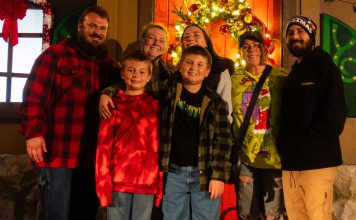The library at Hollister’s Sunnyslope Elementary School was packed with second-graders that rainy afternoon recess period. In all the racket and ruckus, I found a quiet corner to peruse a book I’d discovered on the shelves. It featured a funny little orange fellow with an oversized walrus mustache – a creature dreamed up by author Theodore Geisel, better known as Dr. Seuss. Upon finishing my first reading of “The Lorax,” a simple tale teaching the importance of good stewardship of our planet’s natural resources, my child’s mind had learned some environmental truths: All life is valuable. All life is fragile. All life is connected in a great tapestry of creation.
More than 40 years after Dr. Seuss published his classic children’s book, Hollywood last weekend released its animated version of “The Lorax,” making more than $70 million on its opening. But the film – like the book – is controversial. It’s been getting scathing criticism from pundits who see it as “green propaganda” intent on brainwashing America’s young people against business and corporate enterprise.
The message of “The Lorax” is by no means anti-business. In fact, the story makes the case that the economy and ecology are closely intertwined, that humans must save and sustain our natural resources in order to save jobs and sustain a viable economy. Soon after the last Truffula tree is cut down, the factory in Sneedville closes and the Once-ler, the owner, goes bankrupt. The message of “The Lorax” is that we need to maintain equilibrium between nature and commercial enterprise. If we don’t, in the end, both worlds are imperiled.
It’s important to understand that “ecology” and “economy” share the same etymology. They’re derived from the Greek root “oikos” which means “household.” Ecology describes the management of our planet’s resources to sustain natural communities. Economy describes the management of our financial resources to sustain human communities. In recent years, the concept of “ecological economics” has developed among researchers studying the interdependence of natural ecosystems and human economic systems.
Pundits opposed to the themes of “The Lorax” argue that taking steps to conserve our natural resources will destroy our national and local economies. The truth is the opposite. Businesses require the resource reserves of nature to continue operating and creating jobs for employees and wealth for stockholders. Making products and transporting those goods to consumers requires the consumption of nature’s energy sources – fossil fuels or clean energy sources such as the wind or sun or biofuels. Human health is also a component of economic stability. Too many workers getting sick too takes a toll on productivity. Environmental contaminants or carcinogens damage our bodies and sap our health.
Here in California, the nation’s top agriculture producing state, our ranching and farming economies depend on the quality and wise use of our water and fertile ground. Farmers now face the threat of changing weather patterns due to the climate changes caused by global warming. If California suffers too many drought years, we’ll see food prices rise as crop-yields decline. You don’t need a Ph.D. in economics to see that climate change can do severe damage to our state’s financial fitness.
In recent years, there’s been a heated contest in Sacramento over how best to manage California’s budget and reinvigorate the economy. Unfortunately, protecting our natural resources has not had much part in this debate. Our state’s natural resources play a power role in our economic health. This political ignorance was made evident by Gov. Jerry Brown threatening to shut state parks even though these beautiful areas bring in many millions in tourism dollars.
The message of “The Lorax” is not anti-business. Rather, it advocates responsible business actions that strengthen local economies by intelligently conserving our natural resources. If we, like the Once-ler, choose to destroy our natural treasures for the accumulation of short-term profits for a few, we will pay a heavy price – an environmental price passed on to future generations.
Even though “The Lorax” is overall sad and gloomy, the story does end a bit upbeat. The child receives a seed from the Once-ler he saved from a Truffula tree. It’s a seed of hope. That rainy day during second-grade recess at Sunnyslope School, Dr. Seuss’s story planted a seed in my own child’s mind, a seed containing the message that all life is valuable, all life is fragile, and all life is connected in a great tapestry of creation.












